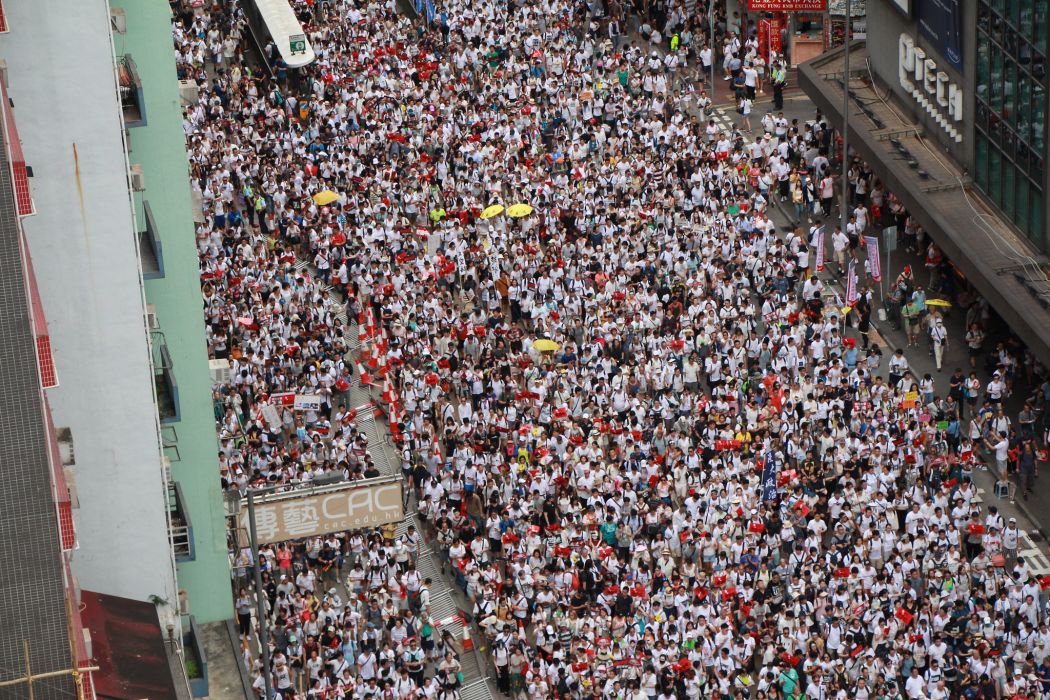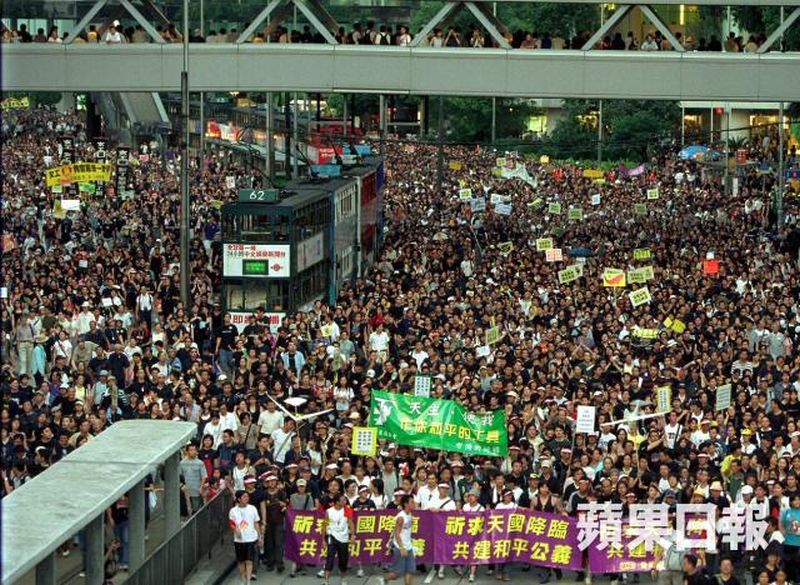The coverage of the protest rally this past Sunday reveals some interesting ways in which numbers are manipulated by members of both sides of the debate, as well as the media, in order to swing the public in a desired direction.
It is now customary in Hong Kong that whenever there is a large gathering of people in the form of a march or strike to support a certain cause, or protest against a given law, the media report two numbers estimating the size of the crowd. One of these comes from the organizer, while the other comes from the police.
In many cases, depending on the extent of the issue’s controversy and public attention, the two numbers are wildly diverging, in some senses reflecting the polarization of society.

An earlier rally against the proposed amendment to the extradition law in late April serves as a case in point. The pro-democracy organizers claimed 130,000 attended while the pro-government police estimate was 22,800. The figures from last Sunday’s rally were 1.03 million according to the organizer, Civil Human Rights Front, while the police estimate was 240,000.
These ridiculously divergent numbers obviously serve as anchors for supporters of the respective sides.
Notice that all of the figures above avoid including too many zeros. Undoubtedly, the anti-amendment group added the extra .03 onto the exact one million figure in order to give their estimate a veneer of accuracy, as if their measurement procedures could calculate numbers of the masses down to a margin of error of about three percent from a round number.
The pro-government police numbers of 22,800 or 240,000 follow a similar pattern. Little is mentioned by either side about the mechanisms behind how they arrived at these numbers. However, figures that end in too many zeros, such as half a million or a million, may appear to be too casually calculated, and this becomes open to suspicion.
Probably, the best the public can do is add the estimates from both groups together and then divide by two in order to get closer to the truth. In the case of Sunday’s march, that would give us a number of around 600,000 to 700,000 people.

However, once a numerical estimate appears, the narrative begins. And as most of us now know, in an era of fake news, narratives can be much more persuasive than any deeper truths.
As an example of this, take a news report from the Wall Street Journal, a major American right-wing broadsheet, the day after Sunday’s march. The paper reported both of the crowd-size estimates along with their sources early in the story. However, later in the story, the paper quotes a lawyer who questioned how the Hong Kong government could ignore one million people on the street. Two days later in the WSJ, the number “one million” is mentioned again without giving the police estimate.
Another international, centre-left television network, CNN, did likewise, reporting both estimates early in a story on Monday but then later in the article mentioned the pro-democracy camp’s “1-million strong mandate.” Two days later, in a CNN article, the “one million” figure was stated plainly as if a fact.
So over just a couple of days, the police estimate had disappeared and “one million” had functionally morphed into the accepted crowd size. Nancy Pelosi solidified the figure on Twitter the same day.

And so the “one million” narrative has begun. As a number gets print, airtime and Twittertime, it goes from being an estimate to a fact. That is, depending on what one’s news source is. Going in the other direction, on Wednesday, the day of the large crowd in Admiralty, China Daily laughably described the crowd in a headline as “hundreds gather,” next to a photo where there were visibly thousands.
Turning back the clock, the oft-mentioned 500,000 figure given for the turnout in the protest against the national security bill in 2003 is now cast in stone. No one questions it. And who initially came up with the half million estimate is effectively lost to history.
Thus, the mere frequency that an estimated number is mentioned can sometimes end up deciding whose narrative wins out. Of course, part of this involves how easily the number rolls off the tongue, or at least enjoys easy multiples of the fingers on our hands, fives and tens being preferred.
So what does this all mean? Clearly, we are unlikely to ever hear the number 1.03 million again, but “one million” is likely to have legs. Perhaps Hong Kong’s finest would have had better luck in controlling the narrative if they’d gone with a half a million.
Kong Tsung-gan‘s new collection of essays – narrative, journalistic, documentary, analytical, polemical, and philosophical – trace the fast-paced, often bewildering developments in Hong Kong since the 2014 Umbrella Movement. As Long As There Is Resistance, There Is Hope is available exclusively through HKFP with a min. HK$200 donation. Thanks to the kindness of the author, 100 per cent of your payment will go to HKFP’s critical 2019 #PressForFreedom Funding Drive.

